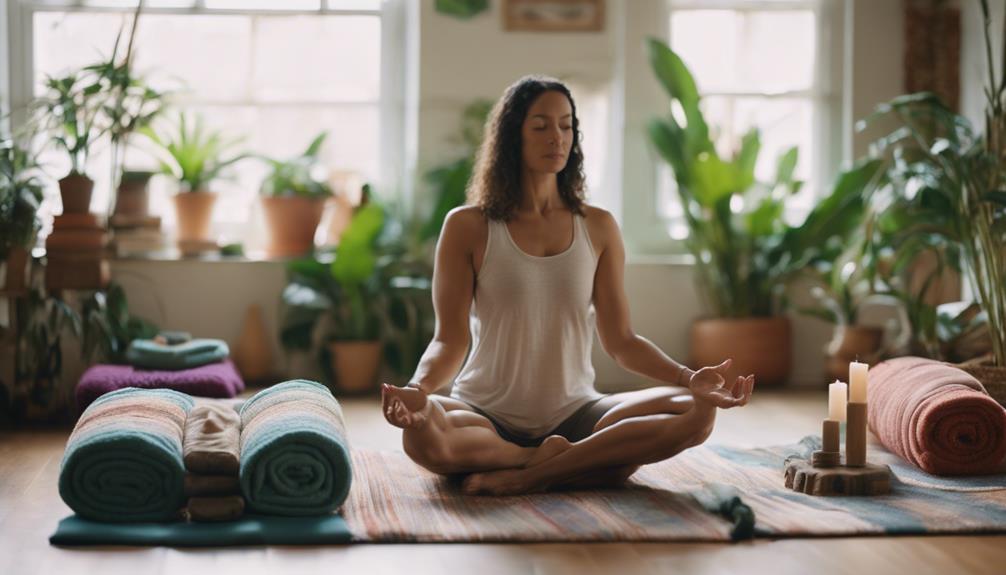When Was Yoga Discovered? ===
Yoga has captivated the hearts and minds of people for centuries. But when was yoga discovered? The answer is steeped in history, philosophy, and a touch of mystery. From ancient practices to contemporary styles, the journey of yoga is both fascinating and enriching. This article will explore the origins of yoga and trace its evolution through time, providing insights into its historical significance and relevance today.
Unraveling the Mysteries: When Was Yoga Discovered?
When we seek to answer the question of when yoga was discovered, we delve into a rich tapestry of ancient traditions and texts. The earliest documented references to yoga can be traced back to the Vedas, a collection of sacred texts from India that date as far back as 1500 BCE. These texts highlight the spiritual and philosophical aspects of yoga, suggesting that it was not merely a physical practice but a holistic approach to life. The term ‘yoga’ itself originates from the Sanskrit word "yuj," meaning to unite or join, emphasizing the connection between the mind, body, and spirit.
The Upanishads, composed around 800-400 BCE, further expand on the principles of yoga, focusing on spiritual enlightenment and the quest for self-realization. The Bhagavad Gita, a significant Hindu scripture written around 200 BCE to 200 CE, also incorporates yoga as a crucial element of its teachings. This period marks the evolution of philosophical frameworks that would shape the practice of yoga as we know it today, intertwining ethics, meditation, and physical postures.
As we move into the classical period of yoga, the Yoga Sutras of Patanjali were compiled around the 2nd century BCE. This seminal work serves as a foundational text for understanding the philosophy and methodology of yoga. The Sutras outline the eight limbs of yoga, known as Ashtanga, which include ethical guidelines, postures, breath control, and meditative practices. Thus, when was yoga discovered? It can be said that the roots of yoga were firmly planted thousands of years ago, creating a profound impact that continues to resonate in modern society.
From Ancient Roots to Modern Mats: The Yoga Timeline!
The journey of yoga from its ancient roots to contemporary practice is a timeline filled with evolution and adaptation. Following the classical period, the practice of yoga continued to develop through various schools of thought and styles. During the medieval period, many influential texts emerged, such as the Hatha Yoga Pradipika, which laid the groundwork for physical yoga practices that focus on postures and breathing techniques. This period saw an increased emphasis on the physical aspects of yoga, paving the way for the diverse forms we see today.
In the late 19th and early 20th centuries, yoga began to gain popularity beyond India, thanks to key figures such as Swami Vivekananda and Sri T. Krishnamacharya. These pioneers introduced yoga to the Western world and emphasized its physical, mental, and spiritual dimensions. The introduction of asanas, or postures, brought a new dimension to yoga practice, resonating with individuals seeking both physical fitness and spiritual growth. This marked a turning point in how yoga was perceived and practiced globally.
Fast forward to the 21st century, and yoga has transformed into a global phenomenon. Whether practiced in studios, homes, or parks, the question of when was yoga discovered now seems almost secondary to its widespread acceptance and adaptation in various cultures. From Vinyasa to Bikram, and Yin to Kundalini, the myriad styles available today cater to diverse preferences and needs. Yoga has transcended its ancient origins, evolving into a practice that fosters physical wellness, mental clarity, and a deep sense of community, making it more relevant than ever in our fast-paced world.
The Enduring Legacy of Yoga ===
As we reflect on the question of when was yoga discovered, it’s clear that this ancient practice has journeyed through time, adapting to cultural shifts while retaining its core essence. From its roots in the Vedas and Upanishads to the modern yoga mats found around the globe, yoga continues to inspire and transform lives. Whether you are a seasoned practitioner or a curious newcomer, the story of yoga invites everyone to explore the rich history and embrace the timeless benefits of this remarkable practice. So, roll out your mat, find your breath, and join in the enduring legacy of yoga!
